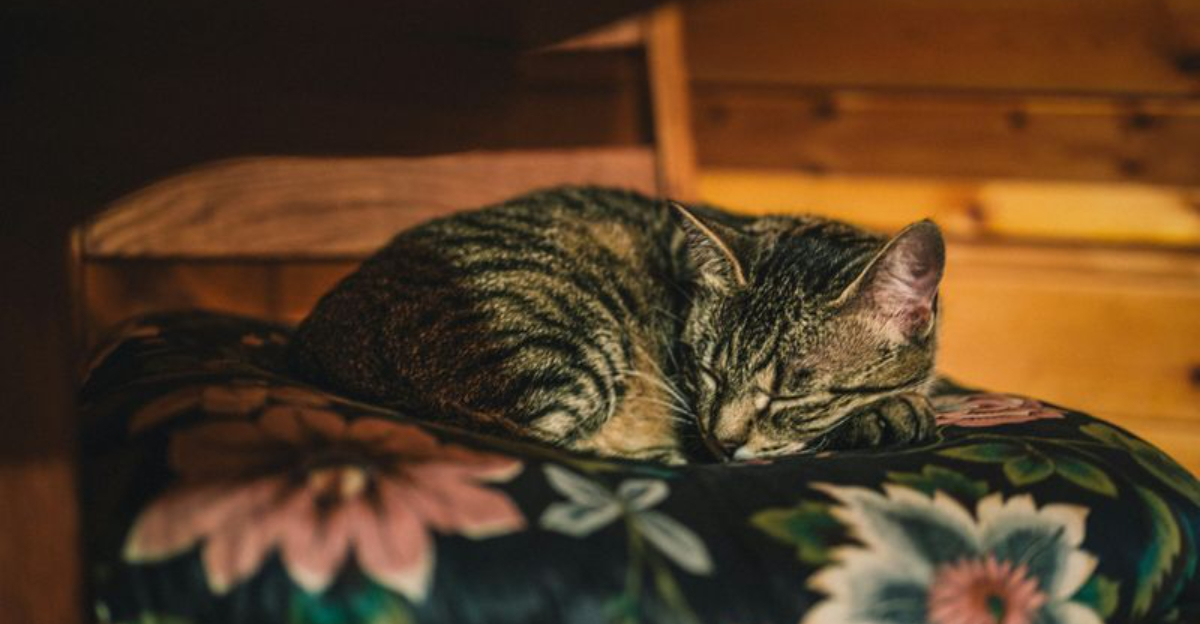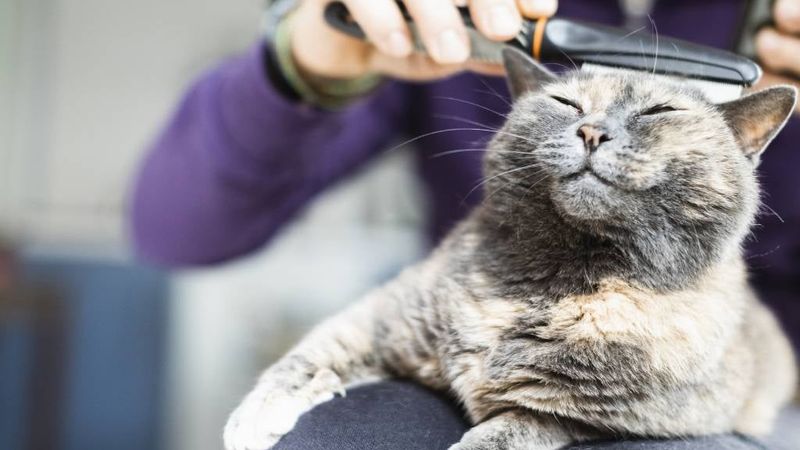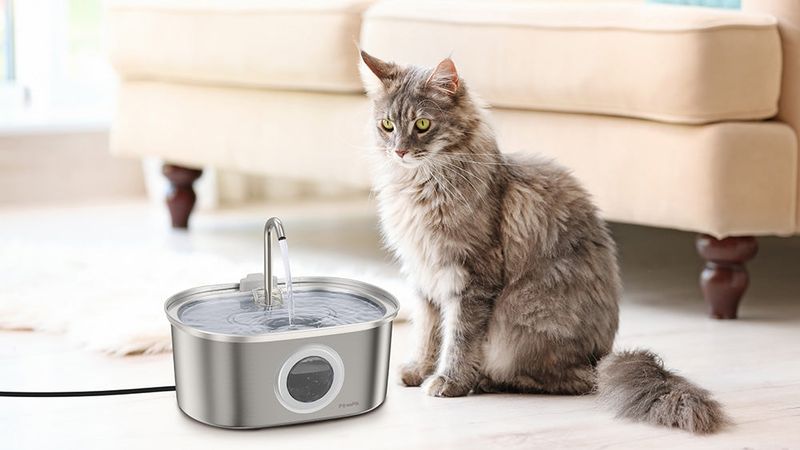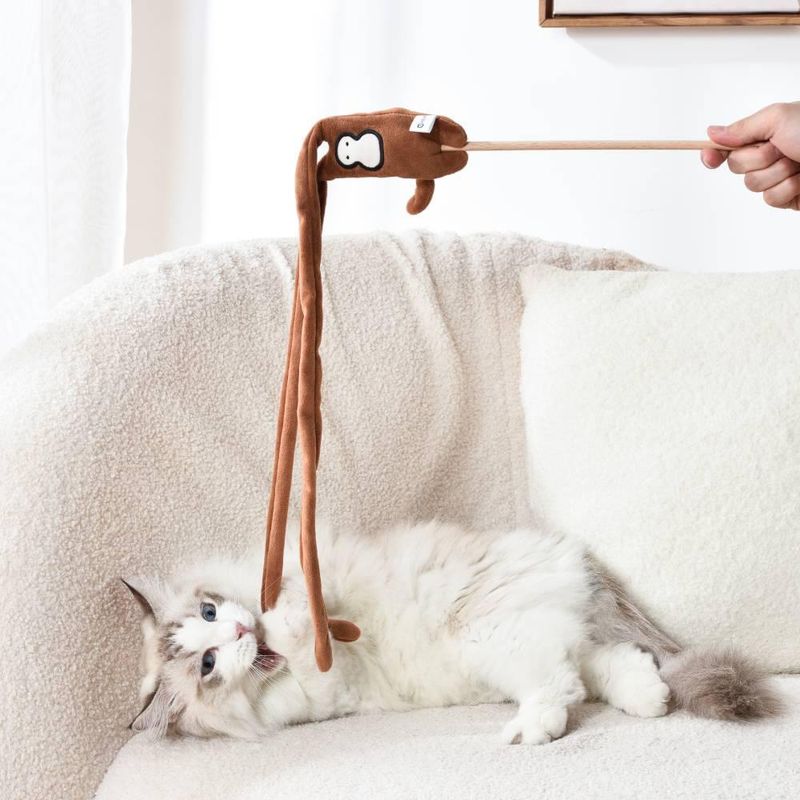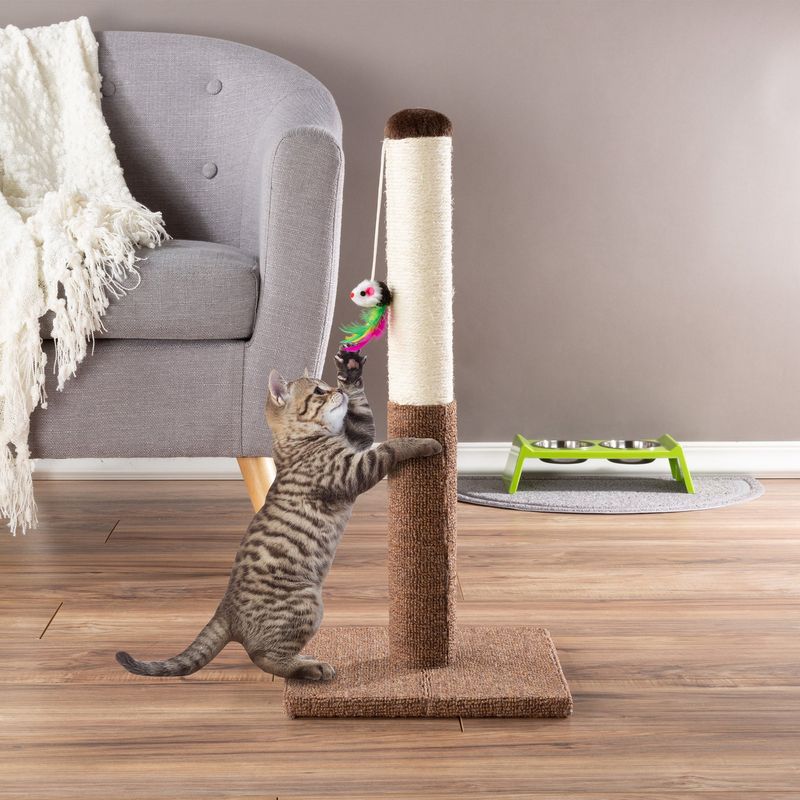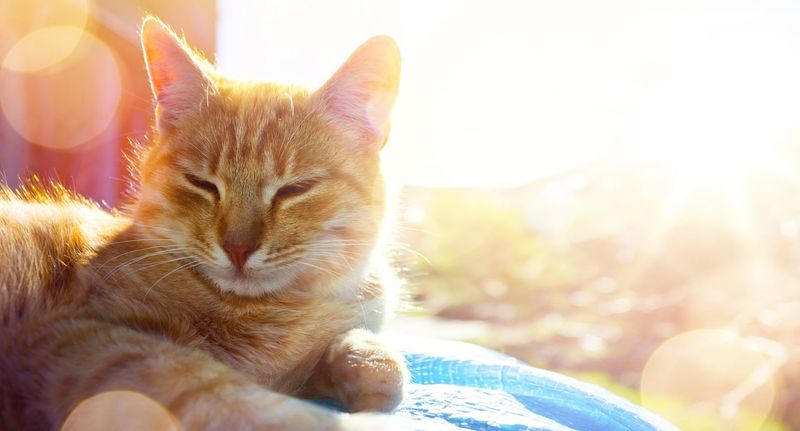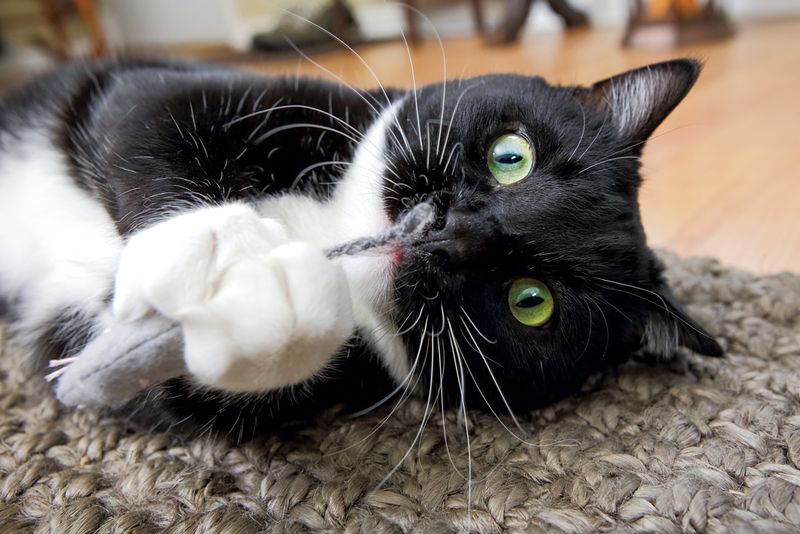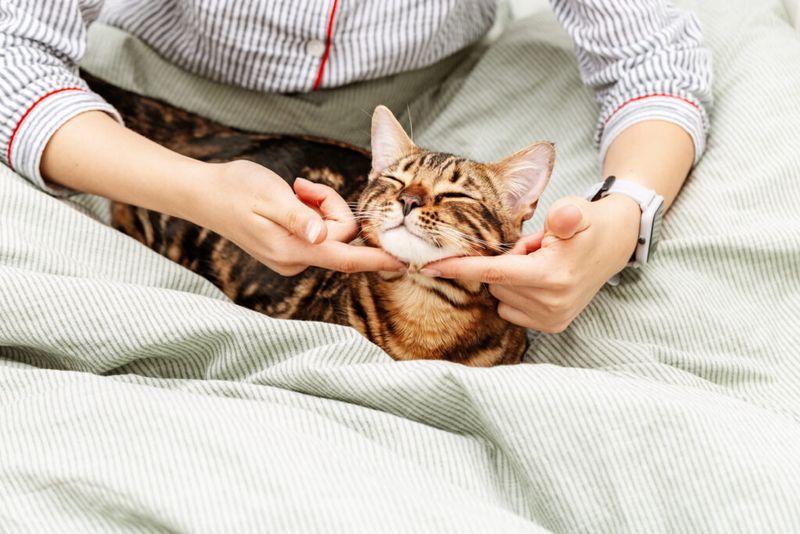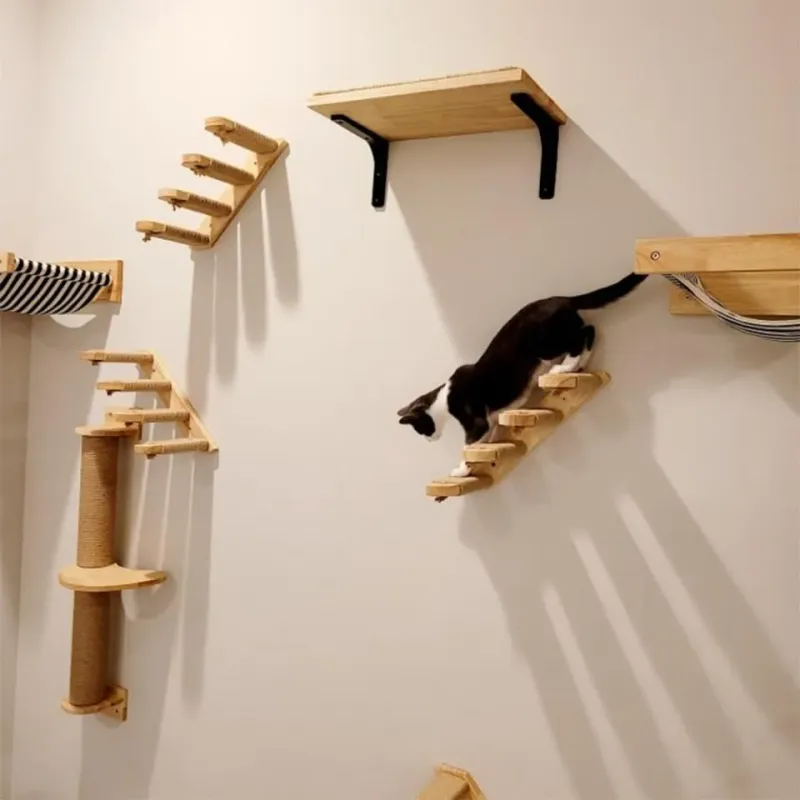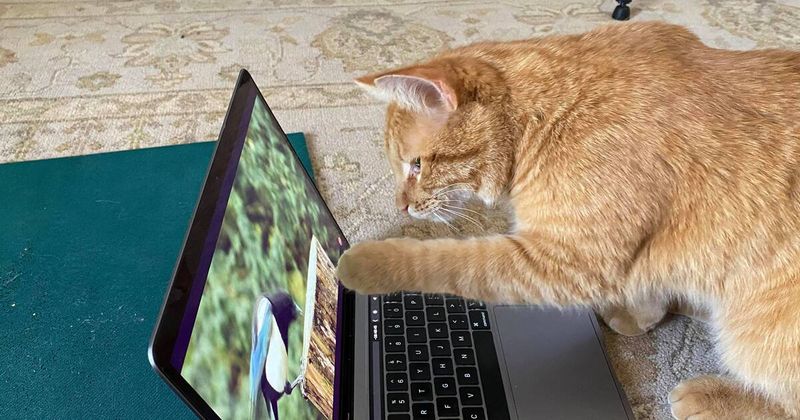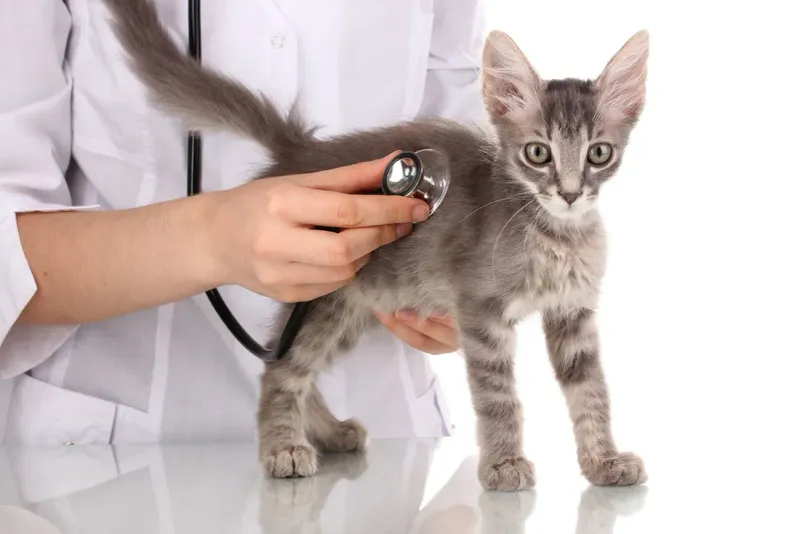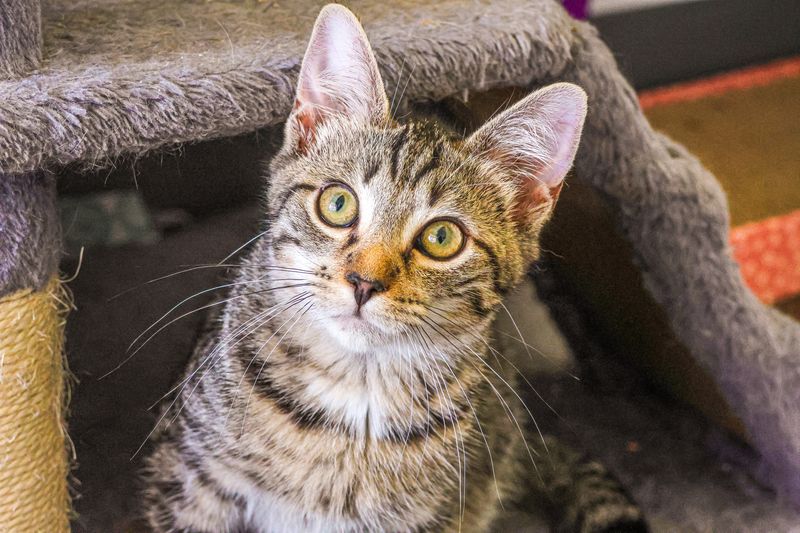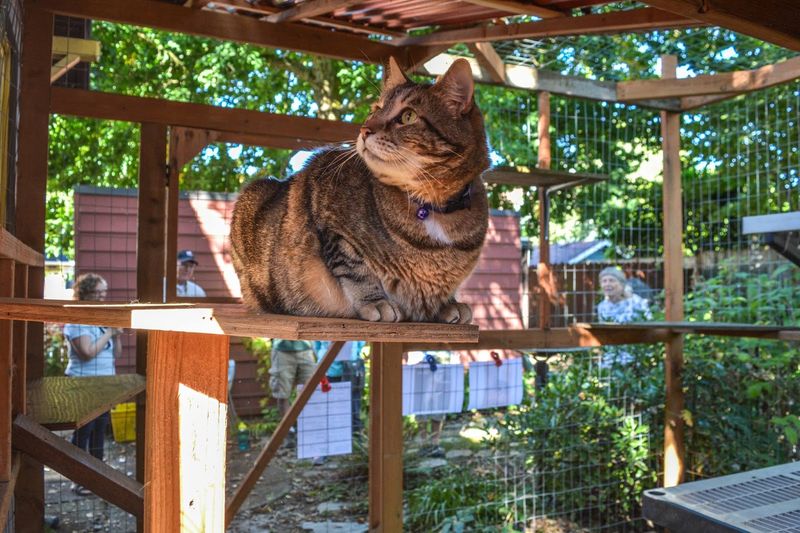📖 Table of Content:
- 1. Slow Blinking Conversations
- 2. Elevated Viewing Spots
- 3. Cardboard Box Hideaways
- 4. Consistent Feeding Schedule
- 5. Brushing Sessions
- 6. Fresh Running Water
- 7. Dedicated Play Sessions
- 8. Vertical Scratching Surfaces
- 9. Sunshine Basking Spots
- 10. Scheduled Alone Time
- 11. Foraging Opportunities
- 12. Scent Enrichment
- 13. Midnight Play Sessions
- 14. Gentle Massage
- 15. Climbing Opportunities
- 16. Watching Bird Videos
- 17. Routine Veterinary Care
- 18. Hidden Treats Scavenger Hunts
- 19. Safe Outdoor Experiences
Cats carry an air of mystery, often keeping their true feelings well hidden behind a calm gaze or flick of the tail. Despite their reputation for independence, they have specific needs and preferences that go far beyond food and shelter. Recognizing these subtle desires can reveal just how emotionally complex they are.
Many cats quietly long for more attention, comfort, and playful engagement than they outwardly demand. Their cues can be easy to miss—like a slow blink, a soft purr, or a gentle headbutt. These small gestures often signal a need for connection, routine, or simply your presence.
Tuning into these quiet requests can transform daily interactions into deeper, more meaningful moments. A little extra effort goes a long way in a cat’s world, especially when it comes to affection and routine. Meeting these unspoken needs brings out the best in your feline companion.
1. Slow Blinking Conversations
What looks like a lazy eye blink is actually one of the most sincere forms of feline affection. Cats use this gesture to show they feel safe, content, and bonded with you.
It’s a language many humans don’t realize they’re being spoken to in. Your cat interprets this gesture as trust and safety.
Since cats are vulnerable when they close their eyes, this simple action tells them you’re not a threat and strengthens your emotional connection.
2. Elevated Viewing Spots
Felines naturally seek high places to survey their territory. Unlike humans who prefer ground level, cats feel safest when they can monitor everything from above. This instinct dates back to their wild ancestors, who used height for protection.
Creating more elevated perches throughout your home satisfies this deep-seated need. Window sills, bookshelves with cleared spaces, and wall-mounted platforms make perfect observation posts.
The security of height reduces stress and anxiety in your cat. Added bonus: watching your kitty navigate these vertical highways provides endless entertainment as they leap, balance, and lounge like the acrobats they are.
3. Cardboard Box Hideaways
The universal cat love for cardboard boxes isn’t just a funny internet meme – it’s rooted in their psychology. Boxes provide instant security, satisfying their instinctual need for enclosed, defendable spaces where they can observe without being seen.
Leaving out various-sized boxes creates an ever-changing playground. Your cat experiences a delightful mix of comfort and excitement with each new box.
The confined space also helps regulate body temperature, as cats prefer environments warmer than humans find comfortable. Next time you receive a package, resist recycling that box immediately – your cat considers it a gift just for them!
4. Consistent Feeding Schedule
Cats thrive on predictability, especially regarding mealtimes. Their internal clocks are remarkably precise – notice how your cat starts circling your legs at the exact feeding time? This isn’t a coincidence but biological programming.
Regular feeding times create security and reduce anxiety. When meals arrive unpredictably, cats experience genuine stress that can manifest as behavioral problems or digestive issues.
Automatic feeders can help maintain consistency when your schedule varies. Your cat doesn’t necessarily need you to be present for every meal, but they do need reliability. The peace of mind from knowing when food will appear allows them to relax and enjoy other activities throughout their day.
5. Brushing Sessions
Regular brushing does more than just reduce shedding – it mimics the social grooming cats naturally do with trusted companions. The sensation reminds them of kittenhood when their mother groomed them, creating deep feelings of security and affection.
Short-haired cats benefit from weekly brushing, while long-haired breeds need it several times weekly. Using the right brush makes all the difference – try different types to discover your cat’s preference.
Beyond the emotional bonding, brushing improves skin health by distributing natural oils and removing loose fur that could cause hairballs. Many cats who initially resist brushing eventually become enthusiastic fans once they associate it with positive attention.
6. Fresh Running Water
Many cats are fascinated by running water, pawing at faucets or drinking from dripping taps. This preference stems from wild cat instincts – moving water is typically safer than stagnant pools that might harbor bacteria or parasites.
Pet fountains satisfy this natural preference while encouraging better hydration. Cats with access to flowing water often drink more, supporting kidney health and preventing urinary tract issues that commonly plague domestic cats.
Placing water sources away from food bowls also matches feline instincts. In nature, cats hunt away from their water supply to avoid contaminating it with prey. This simple adjustment – separating food and water stations – can significantly increase your cat’s water consumption.
7. Dedicated Play Sessions
Regular play isn’t just fun – it’s essential for your cat’s physical and mental wellbeing. Indoor cats especially need these opportunities to express natural hunting behaviors. Without them, boredom and frustration can lead to destructive habits or depression.
Wand toys with unpredictable movements best simulate prey, triggering your cat’s hunting sequence: stalking, pouncing, and capturing. The key is mimicking realistic prey movements – erratic, stop-and-start motions that disappear behind furniture.
Even short daily sessions of 5-10 minutes provide tremendous benefits. Morning and evening play times align with cats’ natural crepuscular activity patterns. Rotating toys keeps experiences fresh and engaging, preventing the habituation that leads to disinterest.
8. Vertical Scratching Surfaces
Scratching isn’t naughty behavior – it’s a biological necessity for cats. The action removes old claw sheaths, marks territory with scent glands in their paws, and provides essential muscle stretching. Most cats prefer vertical scratching that allows full-body stretching.
Tall, stable posts covered in sisal rope typically outperform carpet-covered options. Placing these posts near sleeping areas and entry points to rooms addresses your cat’s natural desire to scratch upon waking and when entering new spaces.
Rewarding post use with treats or praise reinforces good habits. Sprinkling catnip on new scratchers can increase initial interest. Remember that scratching isn’t optional for cats – providing appropriate surfaces protects your furniture by meeting this need constructively.
9. Sunshine Basking Spots
Cats seek out sunbeams with almost religious devotion. These warm patches provide the perfect temperature for feline comfort, typically 20 degrees higher than humans prefer. Beyond warmth, sunlight exposure helps cats synthesize vitamin D and regulate their sleep-wake cycles.
Creating accessible sunny spots becomes especially important during winter months. Clearing window sills, placing beds near south-facing windows, or adding window perches can significantly improve your cat’s daily happiness.
The changing position of sunbeams throughout the day creates a natural rotation of resting spots. Observant cat owners often notice their pets moving predictably with the sun’s path, a behavior that connects them to natural rhythms despite indoor living.
10. Scheduled Alone Time
Despite their reputation for independence, cats actually appreciate routine solitude. Constant interaction can overwhelm even the most social felines. Creating predictable periods when your cat won’t be disturbed allows them to fully relax.
Dedicated cat rooms or quiet zones with comfy beds, scratching posts, and toys provide perfect retreats. Respecting these boundaries teaches children and visitors that sometimes kitty needs space – just like humans do.
This alone time allows cats to engage in natural behaviors like self-grooming and contemplative window-watching without interruption. Many cat behavior problems stem from insufficient downtime, as stress builds when they can’t escape stimulation. Balancing interaction with respite creates the ideal environment for feline mental health.
11. Foraging Opportunities
Free-feeding from bowls removes the mental stimulation cats evolved to experience while hunting. In nature, cats work for their food through stalking, pouncing, and problem-solving. Puzzle feeders and food-dispensing toys recreate this mental challenge.
Starting with simple puzzles and gradually increasing difficulty keeps your cat engaged. Hiding small portions of dry food around your home also encourages natural foraging behaviors.
The mental workout from food puzzles reduces boredom, prevents obesity by slowing consumption, and satisfies predatory instincts. Many cats show marked behavioral improvements when given these opportunities to “hunt” for meals. The effort expended figuring out how to access food provides satisfaction that a regular bowl simply cannot match.
12. Scent Enrichment
A cat’s sense of smell dominates their world in ways humans barely comprehend. Their olfactory capabilities are 14 times stronger than ours, making scent a primary way they experience their environment. Unfortunately, most homes lack sufficient scent variety for feline enrichment.
Growing cat-safe plants like catnip, silver vine, valerian, and cat grass provides safe olfactory stimulation. Rotating these plants creates an ever-changing sensory landscape that prevents boredom.
Even bringing outdoor objects inside occasionally – pinecones, leaves, or grass clippings – introduces fascinating new scents. These simple additions to your cat’s environment stimulate their brain and satisfy natural curiosity without requiring expensive toys or elaborate setups.
13. Midnight Play Sessions
Cats are crepuscular by nature, meaning they’re most active at dawn and dusk. This evolutionary timing helped wild cats hunt when prey was active but larger predators weren’t. Your house cat still carries this biological programming.
Brief play sessions before bedtime help discharge energy that might otherwise become midnight zoomies. Interactive toys that mimic prey movements are particularly effective at satisfying hunting instincts.
Automated toys that operate on timers can provide entertainment during those 3 AM active periods when you’re sleeping. Rotating different toys keeps experiences novel and engaging. Many cat owners report significantly improved sleep after implementing pre-bedtime play routines that accommodate their pet’s natural activity patterns.
14. Gentle Massage
Beyond standard petting, cats benefit tremendously from gentle massage techniques. Light pressure around the base of the ears, cheeks, and chin stimulates facial glands, creating a deeply satisfying experience. These areas contain scent glands that cats use to mark beloved objects and people.
Long, slow strokes from head to tail mimic maternal grooming, producing relaxation and security. Watch for your cat’s signals – purring, kneading, and relaxed posture indicate enjoyment, while tail twitching or skin rippling suggests overstimulation.
Regular massage strengthens your bond while offering health benefits like improved circulation and reduced anxiety. For shy cats, massage sessions build trust gradually. Even the most independent felines typically develop a fondness for these special touch sessions once they understand the routine.
15. Climbing Opportunities
Cats possess remarkable climbing abilities that often go unused in typical homes. Their muscular hind legs, flexible spine, and retractable claws make them natural climbers who view vertical space as equally important as floor space.
Cat-friendly homes incorporate cat shelves, wall-mounted steps, and sturdy climbing trees that create three-dimensional territories. These vertical pathways allow cats to navigate rooms without touching the floor – a feature particularly valuable in multi-pet households.
Beyond exercise, climbing fulfills cats’ instinctual need for elevated resting spots where they can observe their domain safely. The mental stimulation from navigating vertical challenges prevents boredom and associated behavior problems. Even senior cats benefit from accessible climbing options adjusted to their physical abilities.
16. Watching Bird Videos
Modern technology offers unique enrichment opportunities our cats’ ancestors never experienced. Videos specifically designed for cats feature birds, squirrels, and insects moving in ways that trigger hunting instincts. The visual stimulation provides mental exercise without requiring your active participation.
Many cats show remarkable focus during these viewing sessions, tracking movement with intense concentration. This activity stimulates their brain without the frustration of trying to catch prey through a screen.
Rotating different videos prevents habituation. Some cats prefer birds, while others find fish or mice more engaging. Dedicated cat video channels exist on streaming platforms, making this enrichment option easily accessible. Just 10-15 minutes of viewing provides significant mental stimulation during times you’re busy with other tasks.
17. Routine Veterinary Care
Preventative health care often takes a backseat to addressing acute problems. Cats hide illness remarkably well – an evolutionary trait that protected wild cats from appearing vulnerable. By the time symptoms become obvious, conditions are often advanced.
Annual wellness exams allow veterinarians to detect subtle changes before they become serious issues. Regular dental cleanings prevent painful tooth decay and gum disease which cats rarely show signs of suffering from.
Keeping vaccinations current protects against preventable diseases. Weight monitoring helps catch metabolism changes early. While vet visits might seem stressful in the moment, the long-term benefits of preventative care significantly extend both lifespan and quality of life for your feline companion.
18. Hidden Treats Scavenger Hunts
Domestic cats miss out on the mental stimulation of hunting. Finding small treats hidden throughout your home recreates the satisfaction of discovering prey. This simple activity engages their remarkable sense of smell and natural curiosity.
Start with obvious placements, gradually increasing difficulty as your cat understands the game. Consistent hiding spots allow cats to develop “hunting routes” they check regularly, similar to how wild cats patrol territories.
Beyond the obvious fun factor, these scavenger hunts provide excellent mental exercise. The cognitive work of remembering locations and using problem-solving skills to access treats prevents boredom and associated behavior problems. Rotating hiding places and treat types keeps the experience fresh and engaging for years.
19. Safe Outdoor Experiences
Indoor living protects cats from numerous dangers but deprives them of natural sensory experiences. Supervised outdoor time in secure settings offers enrichment that indoor environments can’t fully replicate. Catios (enclosed outdoor patios), window boxes, or screened porches provide safe compromises.
Leash training offers another option for controlled exploration. Proper harnesses designed specifically for cats distribute pressure safely across the chest rather than the neck. Patient training creates positive associations with the harness.
These outdoor experiences provide mental stimulation through new sights, sounds, and smells. The natural sunlight and fresh air benefit physical health. Many behavior problems decrease when cats receive regular outdoor enrichment, as it satisfies curiosity and provides novel stimulation that indoor environments alone cannot match.
